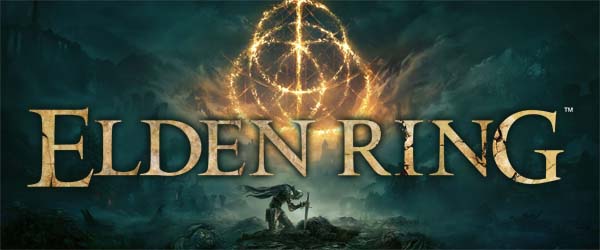
From Software has released its newest, brutally-difficult game, Elden Ring, and it does quite a few things differently from the previous game's in From Software's "Souls-Borne" series. Most notably, Elden Ring has a full open world. That is, an "open world" by the definition that most players would use. Personally, I always thought that Dark Souls and Bloodborne counted as "open worlds" in all the ways that matter, but that's using a very generous personal definition. In any case, this legit open world in Elden Ring does dramatically change the way that Elden Ring is designed, balanced, and paced, and it should also change the way that players approach the game compared to previous titles.
I want to do the same thing that I did with Bloodborne and Sekiro, and provide my own personal tips and tricks for Elden Ring, from the perspective of an experienced, but not elite, player. These tips are geared towards new players coming into Elden Ring fresh, and for other experienced Souls-Borne players who may be having a hard time coming to grips with the new design of the game.
The open world dramatically changes how players should approach the early hours of Elden Ring.
In any case, I hope the following tips help you to get a leg up against the trademark challenge of From Software's Elden Ring. [More]
77f87b87-2035-4c62-b195-ea0f623e39db|0|.0
Tags:Elden Ring, From Software, Namco/Bandai, Limgrave, open world, horse, Torrent, prisoner, magic, parry, counter, summon, spirit, torch

Perhaps I just have a bias against parallel dimensions (as evidenced from my interpretation of Silent Hill's otherworld), but I want to take some time to clear up what might be a mis-conception in the conventional wisdom interpretation behind Dark Souls' multiplayer summoning mechanics. Dark Souls co-op is not necessarily based on parallel dimensions, as many players seem to assume. It might, in fact, be intended to be an abstraction of some kind of time travel. I've noticed that many players online already seem to refer to the multiplayer mechanic of these games in terms of time travel, but I've yet to see any wikis, lore videos, or blogs that seem to explain multiplayer as a time travel mechanic.
I want to preface this analysis by stating that I'm not asserting that the following explanation is the absolute, 100% correct interpretation of the mechanic. Individual players may disagree based on their own reading of the game, and I'm personally somewhat conflicted on the topic myself. I merely want to propose this as a possible alternative to the defacto "parallel worlds" interpretation. I'm going to point out in-game evidence that supports the idea that Dark Souls' multiplayer is based on time travel, but there is also in-game evidence and mechanical evidence that flat-out contradicts that interpretation. I will address those contradictions as well. So that being said, please keep an open mind, and enjoy the read!
The summoning mechanic
There are two games in the series that are not part of the Dark Souls franchise, and which have different in-game explanations and rules for the same multiplayer features (more or less). Those games are, of course, Demon's Souls and Bloodborne. Both have asynchronous multiplayer and summoning mechanics that work similarly to Dark Souls.
Demon's Souls summoning operates under the idea of summoning the spirit of a fellow adventurer who's soul is trapped in the Nexus. This is why you must be in soul form in order to be summoned. Bloodborne's beckoning operates [similarly] under the principle of manifesting hunters out of dreams (which seems to operate under a similar cyclical paradigm to Dark Souls, but I'm not 100% sure). In Dark Souls, you aren't necessarily summoning ghosts (as you do in Demon's Souls), since the undead in Dark Souls are more akin to zombies than ghosts. Also, characters in Dark Souls can leave summon signs whether they are hollowed (dead) or in human form (revived), which is a significant alteration from Demon's Souls. A lore reason for summoning is provided in Dark Souls:
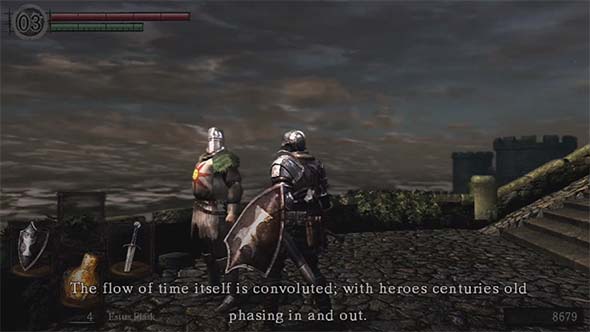
Solaire explains to us how summoning works:
"We are amidst strange beings, in a strange land.
The flow of time itself is convoluted; with heroes centuries old phasing in and out.
The very fabric wavers, and relations shift and obscure.
There's no telling how much longer your world and mine will remain in contact.
But, use this, to summon one another as spirits, cross the gaps between worlds, and engage in jolly co-operation!"
Both Solaire's dialogue, and the White Sign Soapstone (along with other online play items) make references to other "worlds", which leads to many jumping to the conclusion that each player's game is a sort of parallel universe within the Dark Souls lore. However, this may not necessarily be correct. Both Solaire's dialogue and the soapstone also provide explanations for these worlds: "time is convoluted | distorted". This seems to be the explanation for what is meant by "worlds", and it seems that Solaire and the in-game descriptions may be using "time" and "world" interchangeably (could it be a translation / localization issue?). The phrasing in the white soapstone's description joins "the flow of time is distorted", and "the White Soapstone allows undead to assist one another", into a single, compound sentence, which definitely implies that the two phrases (and ideas) are linked.
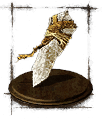
"Online play item. Leave summon sign.
Be summoned to another world as a phantom through your sign, and defeat the area boss to acquire humanity.
In Lordran, the flow of time is distorted, and the White Sign Soapstone allows Undead to assist one another"
The dialogue of Saulden (the Crestfallen Warrior of Dark Souls II) is even more explicit... [More]
b4b5ccdc-fe67-4add-901b-a41077204778|4|5.0
Tags:Dark Souls, Dark Souls II, Dark Souls III, lore, summon, phantom, multiplayer, From Software, time travel, paradox, grandfather paradox, predestination paradox, parallel dimension, soapstone, Solaire, Crestfallen
Warrior, Crestfallen Saulden, Lautrec, Ringfinger Leonard, Anri of Astora, Sirris of the Sunless Realms, Black Iron Tarkus, Iron Golem, Anor Londo, invasion, Demon's Souls, Bloodborne
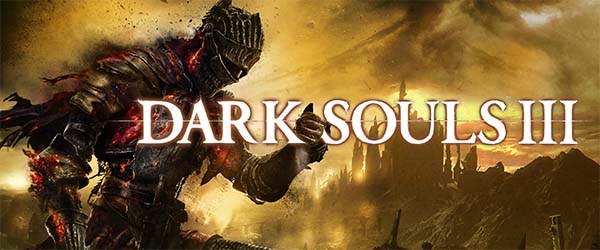
Table of Contents
What the hell does poise do?!!
In my review, I noted that poise seemed to have been turned off in the game's code. Well, FROM Soft has apparently stated that poise is working as intended. Really? How? What does it do? FROM was not forthcoming (so far) with any details on what the stat is supposed to actually do, other than to say that it is "more situational". Ok, whatever. So I guess it's up to the community to try to figure out how this stat apparently works, since it doesn't work in any way comparable to the previous games, nor does it seem to solve the problem that the original implementation of poise was intended to solve.
UPDATE Nov 16, 2016:
It looks like we've finally figured out what Poise does in Dark Souls III. It seems to only be activated when using large weapons that provide Hyper Armor.
I had previously believed that Poise functioned as an "escape method" from quick, stun-locking weapons (like daggers). My early interpretation of Poise was that a higher Poise value may allow the player to escape from a stun lock and be able to roll / counter-attack / parry after 3 hits rather than 5 or 6 consecutive hits. I even remember testing this hypothesis out and finding it to hold true. This would also apply to situations in which a player gets attacks from multiple enemies simultaneously (or in quick succession). Higher Poise would allow you to escape from the 3rd enemy's attack, rather than the 4th or 5th. But according to the Wiki, this doesn't seem to be the case. Am I wrong?
If it is true that Poise only affects Hyper Armor, then I'm still not happy with the mechanic, as it only applies to very specific builds, and might as well be a stat on the weapon rather than a feature of armor. But if it does also affect the ability to escape stun locks, then I guess I would be a little bit more satisfied.
Poise was originally intended to act as a counter to extremely fast weapons like daggers, rapiers, and so on, that could quickly hit and stagger an opponent and put them in a stun lock from which they couldn't escape (so long as the attacker still had stamina). It was also intended to give players with slower weapons an opportunity to tank their way through hits with such fast weapons. You'd still take damage, but assuming your attack with a stronger, slower weapon did more damage than your opponent's weaker, faster weapons, then the trade-off would still be in your favor. If you were going to use a very slow weapon, then it behooved you to also equip heavy armor and other poise-boosting equipment so that you could tank through opponents' hits. That doesn't seem to be the case anymore. A knight in full heavy armor should not get stun locked in a 10-hit combo from a dagger. It simply shouldn't happen. This is what poise was designed to prevent, and it's not doing its job. If an invader shows up in your world with an estoc, and you aren't an expert at parrying, then you might as well just offer up your head on the chopping block and get it over with.
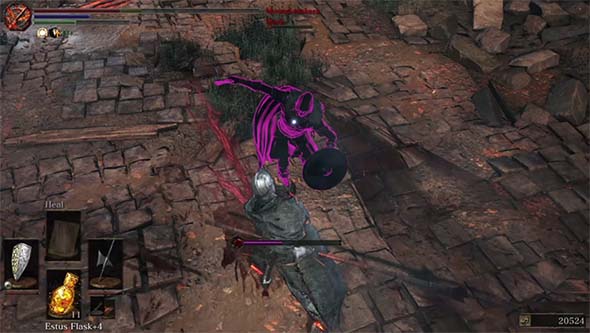
Without poise, heavy armor is worthless, and daggers are incredibly overpowered against slower combatants.
Without poise in this form, heavy armor simply isn't worth its weight encumbrance, especially since you can't even upgrade it to increase its damage resistance. This was a problem in Demon's Souls, which didn't have poise. Heavy armors generally didn't reduce damage enough to be worthwhile, they prevented the player from effectively rolling, and they were so heavy that they prevented the player from being able to pick up all the loot in a level because that game also had an item burden. Rolling was the end-all-be-all of defense in Demon's Souls, and that was one of the game's greatest weaknesses. It was easy to overlook because the developers didn't know better at the time. But they do know better now. Was poise exploitable in Dark Souls? Sure. It was really exploitable in Dark Souls II due to its connection to hyper armor and the inclusion of farmable healing items. But whatever FROM Soft did to it in DSIII seems like a severe overreaction.
Once I learned that poise wasn't working the way I expected it to, I gave up on trying to engage a lot of enemies with my slow halberd. Instead, I started fighting the knights in Lothric Castle and the Grand Archives with my flame-infused barbed straight sword - which I also spent a bunch of titanite to fully upgrade. This speedier weapon allowed me to attack these knights as fast (or faster) than they could attack me, giving me enough of an edge to reliably beat them. The ones with the tower shields and lances still gave me trouble, but the swordsmen fell swiftly to my +10 Barbed Flame Sword. Even Yahtzee noted in his Zero Punctuation review the starting long sword seemed better than any of the numerous boss weapons that he found. I imagine that this is because he also had trouble with the lack of poise, but didn't quite figure out that poise wasn't working.
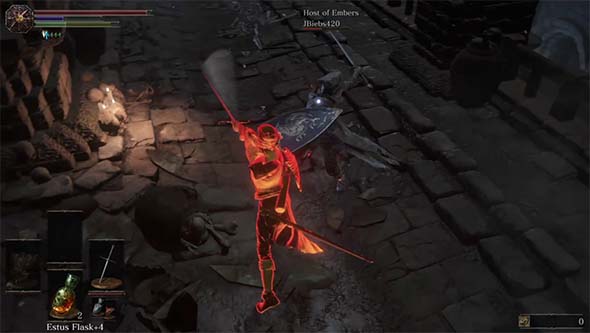
Lack of proper poise allows the estoc's reach and speed to make it a deadly PvP weapon.
So this leaves us with the question of "what, exactly, is poise intended to do?"...
[More]
9fc5b24e-c771-4f00-81da-f9aa41f3eb5f|1|5.0
Tags:Dark Souls, Dark Souls III, poise, PvP, co-op, covenant, phantom, summon, invader, invasion, friendly fire, NPC, Siegward, Siegward of Catarina, Patches, Unbreakable Patches, Anri, Anri of Astora, Yorshka, Blades of the Darkmoon, Darkmoon
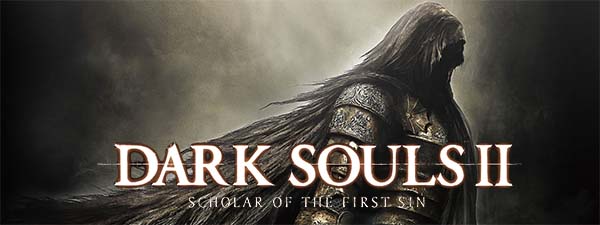
Hot off of playing Bloodborne's The Old Hunters DLC, and with Dark Souls III just over the horizon, I thought I'd get myself hyped up by playing through the re-release of Dark Souls II, Scholar of the First Sin. This version of the game is a next-gen enhancement of the original game that was released on the PS3, XBox 360, and PC a year prior, and it includes improved graphics, faster frame rate, and more challenging enemy-placement. It's available on PS4, XBox One, and PC, and is treated as a completely different game as the original version. It's not a DLC or a patch update (though it does include all three of Dark Souls II's DLC content).
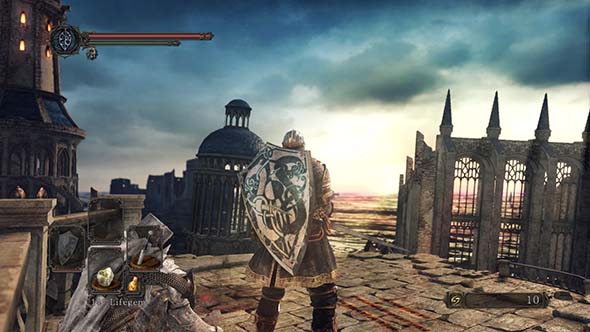
Scholar of the First Sin looks much smoother in motion, with higher resolution and framerate.
Lighting and textures are (at best) only marginally improved from the last-gen release.
I was honestly expecting Scholar of the First Sin's graphics to be considerably better than they are. In fact, I honestly don't think the graphics are much better than the last-gen release; I think the only difference is that it displays at full 1080 resolution and plays at a high end of 60 frames per second. Colors are a little more vibrant, and the game doesn't look as washed-out, but models and environments don't seem any more complex, and textures are only maybe slightly more detailed. Unfortunately, darkness still isn't as dark as it needs to be to make the torch as necessary for exploration as it was apparently intended to be. In pre-release demos, darkness was implied to be a complete fade to black that rendered objects within the dark invisible. Simply adjusting the brightness of your TV wouldn't change that. In the released version, darkness doesn't go completely black, so objects are only hidden if your TV brightness is low - lower than the recommended brightness level of the game. Even then, the release game looks brighter, and Scholar of the First Sin does very little to change that.
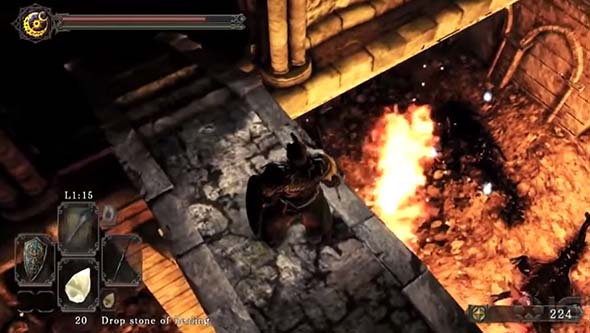
PREVIEW FOOTAGE showcased greater contrast between light and dark, and more detailed textures and geometry...
This graphical downgrade, the complete failure of FROM or Namco/Bandai to inform the public about it, and the resultant misleading marketing that repeatedly showed demos, screenshots, and footage that wasn't representative of the final product left a huge negative impression on a lot of players - especially those who pre-ordered it. That poor initial taste is probably a huge part of the reason why this game has gotten such a negative reception, even though that negative reception is mostly warranted. Scholar of the First Sin was an opportunity to wash that bad taste out of consumers' mouths and give us the game that was advertised, marketed, and pre-ordered. But Namco and FROM didn't bother.
Darkness is just rarely ever a meaningful component of the gameplay. Darkness may lower the range of target locks though, so even though I could plainly see enemies, I felt like I wasn't able to target lock them as readily as I could in the PS3 version. Even so, there's enough sconces laying around that you can light a sconce, extinguish your torch to fight, then re-light it at the sconce after all the enemies have been dispatched. It ends up just being some extra overhead if you care enough to bother with it, and not an essential element of gameplay.
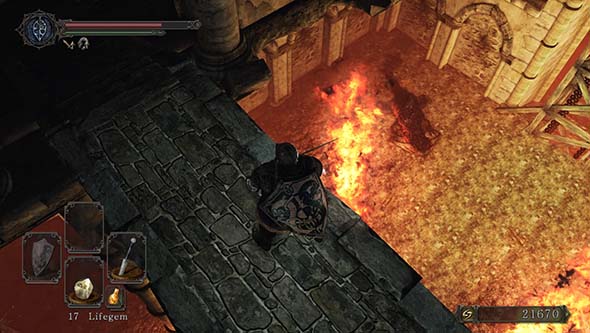
... FINAL PRODUCT shows low contrast between light and dark, frequent repeated textures, and simplified geometry.
Textures, character models, and world geometry don't look noticeably better. Many areas still have generally blander textures than what was presented in pre-release videos, and the textures noticeably repeat. World geometry also seems less detailed and intricate compared to pre-release videos, which takes away a lot of the personality that these preview areas exhibited. I was expecting Scholar of the First Sin to restore many of these superior textures and models from the previews, and I'm really disappointed that the game doesn't look better than it does.
Darker contrast in previews [LEFT] made real-time shadows more vibrant,
and creatures more threatening and mysterious than in the release build [RIGHT].
The improved textures also don't do much to help the game's generally bland art design. There aren't many visually-appealing locations in the game, as they are all just variations of run-down castles and forest paths. Most of them have pretty sparsely-decorated hallways with simple geometry that has little-to-no personality. There's nothing here that even approaches the ominousness of Demon's Souls' Latria, and the oppressive environments of Bloodborne make Dark Souls II almost serene by comparison. Again, Scholar of the First Sin does little-to-nothing to address this. No Man's Wharf probably remains my favorite location in this game, as it's one of the few locations that takes place in a fairly unique setting that actually utilizes light and dark for gameplay purposes.
So while the visual upgrade doesn't really add much to the game, the higher framerate definitely does make a noticeable difference. The PS4 doesn't seem to maintain a full 60-fps at all times, but it seems to always run better and smoother than the 20-30 fps of the PS3 version. Animations are much smoother, and ambient effects (such as foliage swaying in the wind) look much better. I admittedly had to spend some time re-adjusting to the game's speed. After coming back from the rapid pace of Bloodborne, this game almost seemed to be moving in slow motion, and the higher framerate probably contributed greatly to that sensation. That's not necessarily a bad thing; it's just a stylistic difference. Scholar of the First Sin plays smoothly (on the PS4), and it looks decent (even though it should have looked better)... [More]
ac8d6f88-ca6d-4def-983d-10eea4ed035b|2|4.0
Tags:Dark Souls II: Scholar of the First Sin, Dark Souls II, Dark Souls, From Software, online, PvP, co-op, covenants, summon, invader, invasion, phantom, shade, soapstone, covenant, torch, DLC, Crown of the Sunken King, Crown of the Old Iron King, Crown of the Ivory King
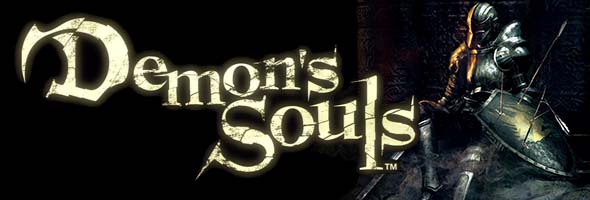
With a new generation of consoles coming into their own, the lifespan of the PS3 and XBox360 is rapidly coming to an end. It's not quite as monumental as the end of the PS2's lifecycle, which is arguably the single best gaming console ever made! With the PS3 and XBox360, our console games started to have consistent online functionality, and with online functionality comes a sad side-effect: a game's life-span is finite. I can always go back and play my favorite PS2 games (like Silent Hill 2, Metal Gear Solid 3, Ace Combat 4, Ico, Shadow of the Colossus, Gran Turismo 3, and Devil May Cry) and have pretty much the same experience that I had the first time I played. But I won't be able to do that with some of my favorite PS3 games, because some of them have online features that won't remain active forever.
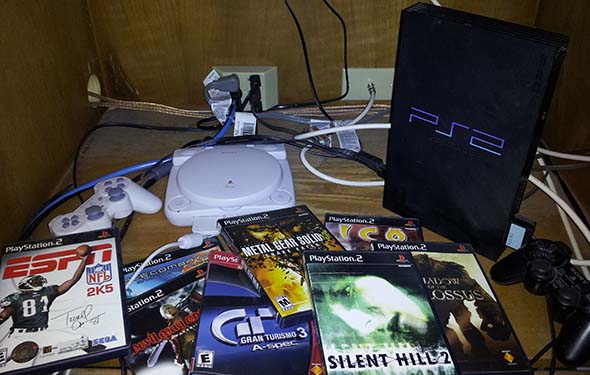
As long as my PS2 is functional, I can always go back and re-play my favorite PS2 games.
PC gamers have been dealing with this problem since the dawn of the internet, but they have work-arounds. PC Games can be modded to support direct TCP / IP connections in order for their online communities to stay online. Hypothetically, you could keep your favorite MMO alive for yourself and your circle of friends in this fashion. But with console games, there are much more significant technical hurdles to overcome, and when the producer shuts down the servers, that is basically the end of that game.
And that is exactly what is going to happen some day with my favorite PS3-exclusive: Demon's Souls.
Every console has its defining games - those games that are reasons for owning the consoles. The original PlayStation had Final Fantasy VII and Metal Gear Solid, the Nintendo 64 had Goldeneye, the Dreamcast had Shenmue and Soul Calibur, the XBox had Halo, GameCube had Resident Evil 4 and Eternal Darkness, the PS2 had Shadow of the Colossus. For me, Demon's Souls is that game for the PS3: the game that makes owning a PS3 worthwhile.
Demon's Souls is a game that completely redefined the way that I think about gaming. My ideas about how a player can interact with a game world and with other players were completely turned on their head with this game. So I want to take a moment to pay tribute to this masterpiece of interactive art with a full review while its servers are still up and running. And maybe - just maybe - I can sell a copy or two to some new players.
Deep and addictive hack 'n' slash action
The gameplay is based on a simple control configuration in which weapons are mapped to the left and right hand and controlled with the left and right shoulder buttons (respectively). The design is reminiscent of a simplified version of FROM's other major game franchise: the mech-combat sim Armored Core. Weapons equipped in the right hand have a basic attack and a heavy attack, and weapons or shields in the left hand have a block and heavy attack (sorry, lefties, no left-handed characters for you!). These basic controls are very simple, and any player can start hacking and blocking away as soon as they pick up the controller. But more advanced controls and variations in weapon functionality make this seemingly-simple combat system very deep.
Each weapon class has different movesets, ranging from the slashing of a sword to the thrusting of a spear, to smashing of a giant hammer. And shields (and some off-hand weapons) have an advanced parry feature that allows you to stun and counter an attacking foe to land a critical hit. You can also attack while running or out of dodges in order to keep a foe guessing. Mastering these various features takes a little bit of time, but it is immensely rewarding when you finally have the skills to go toe to toe with a giant, butcher-knife wielding skeleton with confidence. But don't get overconfident, because this game will punish you for every mistake!
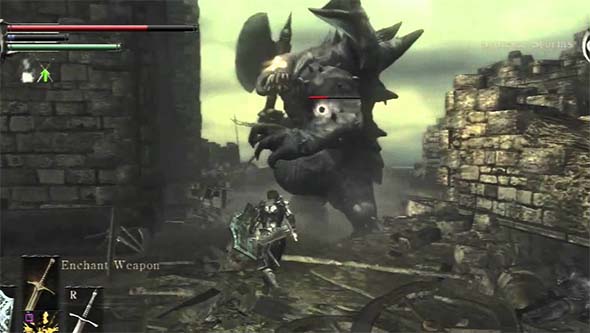
With patience and practice, you'll soon stand confidently before the Vanguard that killed you in the tutorial.
If you die, you lose all your accumulated souls (i.e. "experience"), and must restart the level from the beginning! But there is a shining glimmer of hope: you have one chance to reach the spot where you died in order to recover your lost souls. If you get there... [More]
2d2c2b68-3795-49ce-9bcb-9c3537a79e64|5|4.2
Tags:Demon's Souls, From Software, Atlus, Sony, PlayStation, PS3, PSN, exclusive, RPG, adventure, hack and slash, survival horror, online, PvP, co-op, summon, multiplayer, invader, invasion, phantom, hardcore, mindflayer, Boletaria, Stonefang Tunnel, Tower of Latria, Shrine of Storms, Valley of Defilement, Hidetaka Miyazaki, retro review
|

| 12 | | | | | | | 60 | | 11 | | | | | | | 55 | | 10 | | | | | | | 50 | | 09 | | | | | | | 45 | | 08 | | | | | | | 40 | | 07 | | | | | | | 35 | | 06 | | | | | | | 30 | | 05 | | | | | | | 25 | | 04 | | | | | | | 20 | | 03 | | | | | | | 15 | | 02 | | | | | | | 10 | | 01 | | | | | | | 05 |
|